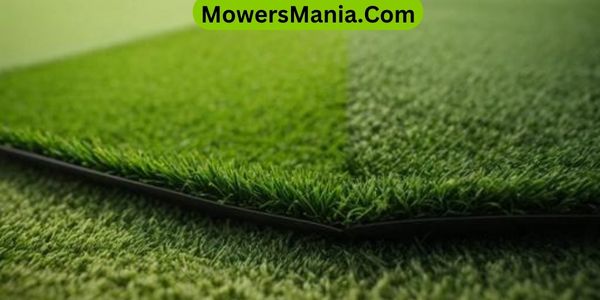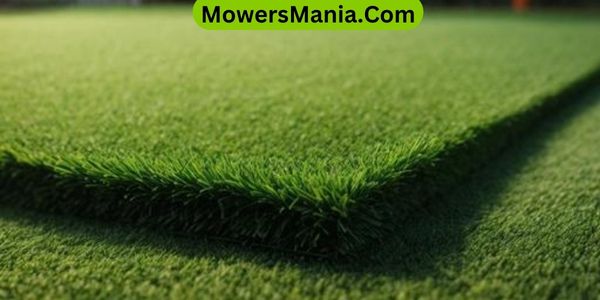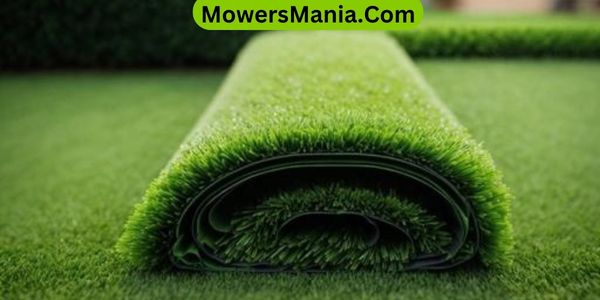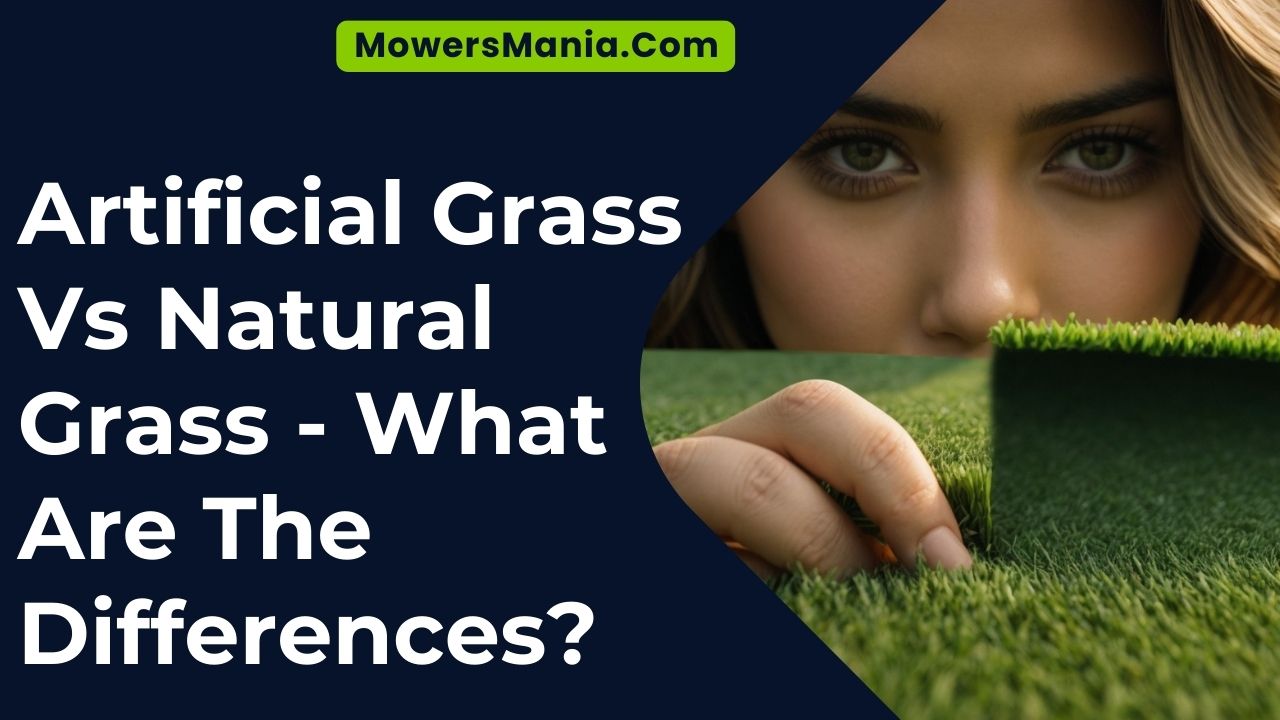Are you considering whether to go with artificial grass or natural grass for your lawn? Well, you’ve come to the right place!
In this article, we’ll explore the key differences between these two options. From appearance and maintenance to durability and cost, we’ll cover it all.

So, put your feet up and get ready to discover which type of grass is the perfect fit for you.
Appearance
When it comes to the appearance of your lawn, the differences between artificial grass and natural grass are significant.
Artificial grass has a consistent, uniform look, with perfectly manicured blades that stay green and lush all year round. It provides a flawless, picture-perfect appearance that requires minimal maintenance.
On the other hand, natural grass has a more varied and organic look. It may have patches of different shades of green, along with occasional bare spots or weeds. Natural grass requires regular mowing, watering, and fertilizing to maintain its appearance.
Artificial grass, on the other hand, only needs occasional brushing to keep it looking its best. Additionally, artificial grass is resistant to pests and diseases, eliminating the need for harmful chemicals.
The appearance of your lawn plays a crucial role in enhancing the overall aesthetic of your home. Whether you prefer the pristine and low-maintenance look of artificial grass or the natural, ever-changing beauty of natural grass, the choice ultimately depends on your personal preference and lifestyle.
Maintenance
When it comes to maintenance, there are two key points to consider: the effort required for upkeep and the cost of maintenance.
With natural grass, you’ll need to regularly mow, water, fertilize, and weed to keep it looking its best. This can be time-consuming and costly.
On the other hand, artificial grass requires minimal upkeep as it doesn’t need to be watered, mowed, or fertilized. However, occasional brushing and cleaning may be necessary to maintain its appearance.
Effort Required for Upkeep
Maintaining artificial grass requires less effort than maintaining natural grass. With artificial grass, you can say goodbye to labor-intensive tasks and enjoy more free time.
Here are some reasons why the effort required for upkeep is significantly reduced with artificial grass:
- No mowing: Forget about spending hours pushing a heavy lawnmower. Artificial grass stays perfectly trimmed without any effort on your part.
- Minimal watering: Save water and reduce your water bill. Unlike natural grass, artificial grass doesn’t require regular watering to stay lush and green.
- No fertilizers or pesticides: Say goodbye to harmful chemicals. Artificial grass doesn’t need fertilizers or pesticides to thrive, eliminating the need for time-consuming and potentially hazardous maintenance tasks.
With artificial grass, you can have a beautiful, low-maintenance lawn without sacrificing your precious time and energy.
Cost of Maintenance
To keep your lawn looking its best, you’ll need to consider the cost of maintaining artificial grass compared to natural grass.
When it comes to maintenance, natural grass requires more attention and resources. With natural grass, you’ll have to regularly mow, water, fertilize, and weed the lawn. These tasks can be time-consuming and expensive, especially if you hire professionals for the job.
On the other hand, artificial grass requires minimal maintenance. You won’t need to mow or water it, saving you both time and money. Occasional brushing and cleaning are all that’s needed to keep your artificial lawn looking fresh and vibrant.
While the upfront cost of installing artificial grass may be higher, the long-term savings in maintenance expenses make it a cost-effective choice.
Durability
Artificial grass offers greater durability compared to natural grass. Here are three reasons why this is important for you:
- Long-lasting beauty: Artificial grass maintains its vibrant color and lush appearance throughout the year, regardless of weather conditions. Say goodbye to brown patches, muddy areas, and uneven growth that can mar the beauty of your lawn. With artificial grass, your outdoor space will always look picture-perfect, providing a source of pride and enjoyment.
- Reduced maintenance: Unlike natural grass, which requires regular mowing, watering, and fertilizing, artificial grass is virtually maintenance-free. This means you’ll have more time to relax and enjoy your yard, rather than spending hours on tedious upkeep. With artificial grass, you can say goodbye to the hassle and expense of maintaining a natural lawn.
- Enhanced durability: Artificial grass is designed to withstand heavy foot traffic, making it perfect for families with children and pets. It can handle intense play and activities without becoming worn or damaged. With artificial grass, you can enjoy a durable and resilient surface that will hold up year after year, providing a safe and enjoyable space for everyone.
Environmental Impact

When it comes to comparing the environmental impact of artificial grass and natural grass, two key factors to consider are water consumption and carbon footprint.
Artificial grass requires little to no water for maintenance, making it a more water-efficient option compared to natural grass.
Additionally, a carbon footprint analysis reveals that the production and disposal of artificial grass can have a significant environmental impact.
Water Consumption Comparison
You can compare the water consumption between artificial grass and natural grass to understand their respective environmental impacts.
When it comes to water consumption, the differences between the two are significant and have a profound effect on the environment.
Consider the following points:
- Artificial grass requires no watering, saving thousands of gallons of water each year. This reduces the strain on local water resources and helps conserve water for other essential needs.
- Natural grass, on the other hand, demands regular watering to maintain its lush appearance. This leads to excessive water usage, contributing to water scarcity and potentially impacting ecosystems.
Carbon Footprint Analysis
The environmental impact of artificial grass and natural grass can be further analyzed through a comprehensive carbon footprint analysis. This analysis considers the total greenhouse gas emissions associated with the production, maintenance, and disposal of both types of grass.
When it comes to artificial grass, the manufacturing process involves the use of fossil fuels, which can contribute to carbon dioxide emissions. Additionally, the disposal of artificial grass can pose challenges, as it isn’t biodegradable and can contribute to landfill waste.
On the other hand, natural grass can absorb carbon dioxide and release oxygen through photosynthesis, making it a more environmentally friendly option. However, the maintenance of natural grass, such as mowing and fertilizing, can also generate carbon emissions.
Therefore, a careful evaluation of the carbon footprint is crucial in determining the overall environmental impact of both artificial and natural grass.
Cost
Comparing the cost of artificial grass to natural grass is an important factor in deciding which option is more suitable for your needs.
When considering the cost, it’s essential to weigh the following factors:
- Installation: Artificial grass may have a higher upfront cost due to the materials, labor, and equipment required for installation. On the other hand, natural grass requires less initial investment, but ongoing maintenance costs can add up over time.
- Maintenance: Artificial grass requires minimal maintenance, saving you time and money on watering, mowing, fertilizing, and pest control. Natural grass, however, needs regular upkeep, including watering, mowing, and fertilizing, which can increase your expenses.
- Durability: Artificial grass is designed to withstand heavy foot traffic and harsh weather conditions, making it a more durable option in the long run. Natural grass may require repairs or replacement, especially in high-traffic areas, adding to your expenses.
Considering these factors, artificial grass may initially seem more costly, but it can provide cost savings over time due to reduced maintenance and durability. However, the cost comparison ultimately depends on your specific needs and preferences.
Installation Process

When considering the installation process for artificial grass vs. natural grass, it is important to understand the steps involved in each option.
The installation process for artificial grass involves several steps, including site preparation, base installation, and turf installation.
On the other hand, natural grass installation involves steps such as soil preparation, seed or sod installation, and regular maintenance.
To better understand the differences between the installation processes, let’s compare them side by side:
| Installation Process | Artificial Grass | Natural Grass |
|---|---|---|
| Site Preparation | Excavate existing turf and soil, level the area, and install weed barrier if needed | Excavate existing turf and soil, level the area, and remove any rocks or debris |
| Base Installation | Install compacted crushed rock or decomposed granite as a base for stability and drainage | No specific base installation required |
| Turf Installation | Lay out the artificial grass, trim edges, and secure it with adhesive or nails | Lay out sod or sprinkle grass seeds evenly, and water regularly for germination |
As you can see, the installation process for artificial grass involves more preparatory work and materials compared to natural grass.
However, once installed, artificial grass requires minimal maintenance, while natural grass requires ongoing care such as watering, mowing, and fertilizing.
Ultimately, the choice between artificial and natural grass depends on your preferences, budget, and the level of maintenance you are willing to undertake.
Frequently Asked Questions [FAQs]
Can Artificial Grass Be Easily Distinguished From Natural Grass by Appearance Alone?
Artificial grass can be easily distinguished from natural grass by appearance alone. You’ll notice that artificial grass has a more uniform color and texture, while natural grass may have variations in color and thickness.
How Often Does Natural Grass Need to Be Watered Compared to Artificial Grass?
Natural grass needs to be watered more frequently compared to artificial grass. It requires regular watering to stay healthy and vibrant, whereas artificial grass does not require any watering at all.
Are There Any Factors That Could Cause Natural Grass to Deteriorate Quicker Than Artificial Grass?
Factors such as excessive foot traffic, extreme weather conditions, and lack of proper maintenance can cause natural grass to deteriorate quicker than artificial grass.
What Impact Does the Use of Pesticides and Fertilizers Have on Both Natural and Artificial Grass?
The use of pesticides and fertilizers can have different impacts on both natural and artificial grass. Pesticides may harm natural grass, while artificial grass doesn’t require them. Fertilizers can benefit both types of grass, promoting growth and health.
Is the Installation Process for Artificial Grass More Time-Consuming Than for Natural Grass?
The installation process for artificial grass is more time-consuming than for natural grass. It requires precise measurements, leveling the ground, and securing the turf. However, the long-term benefits make it worth the effort.
Conclusion
So when it comes to choosing between artificial grass and natural grass, it all boils down to personal preference and priorities.
Artificial grass offers a consistently green and low-maintenance option. It requires minimal upkeep, as it does not need to be watered, mowed, or fertilized. It stays green all year round, regardless of the weather conditions.
Additionally, it is resistant to pests and disease, making it a durable choice for high-traffic areas. However, artificial grass can have a synthetic appearance and may not feel as natural underfoot.
On the other hand, natural grass provides a more authentic and environmentally friendly experience. It has a natural look and feel, providing a softer surface for activities like picnicking or playing sports.
Natural grass also helps to improve air quality, absorb rainwater, and reduce soil erosion. However, it requires regular maintenance such as watering, mowing, and fertilizing. It is also more susceptible to damage from pests, diseases, and extreme weather conditions.
Both artificial grass and natural grass have their advantages and disadvantages in terms of appearance, durability, environmental impact, cost, and installation process.
Ultimately, the decision between artificial grass and natural grass depends on what you value most for your lawn.



